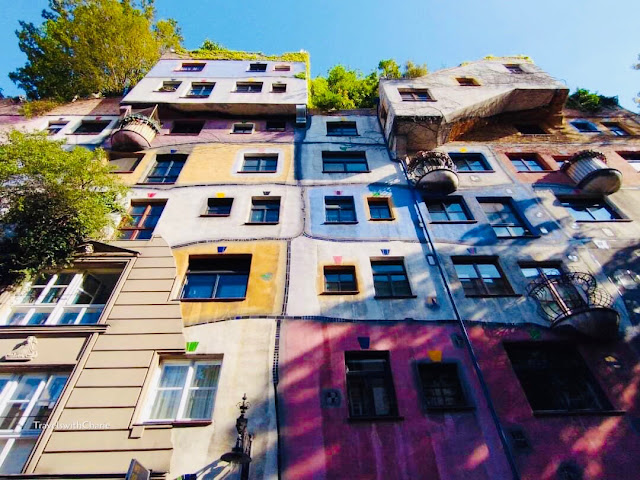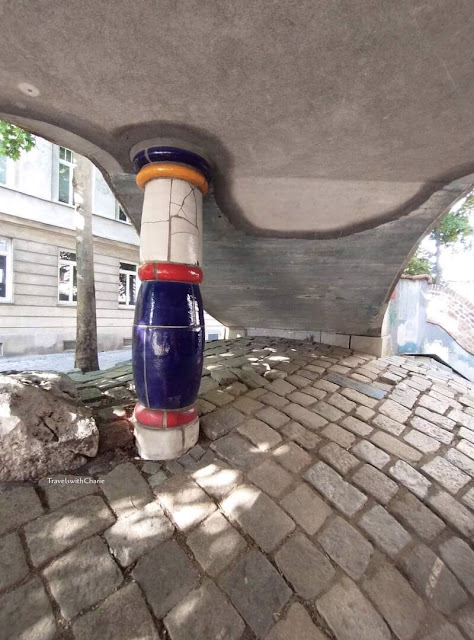Friedensreich Hundertwasser, an Austrian painter, graphic artist and environmental activist, conceptualized Hundertwasserhaus. Together with the architect, Joseph Krawina, his ideas were realized with the creation of Hundertwasser House in Vienna’s 3rd District. Hundertwasserhaus is a 52-unit apartment building owned by the City of Vienna.
Hundertwasser shunned straight lines. He thought they were “godless” and “is something cowardly drawn with a rule, without thought or feeling; it is a line which does not exist in nature.” Notice the uneven lines drawn across the façade of the building and how colorful paint defines each floor within the lines resulting in a wave of colors. Tenants are allowed to decorate or alter their own windows.
Hundertwasser believed buildings should coexist with nature. Nowhere is it more evident than in this rooftop garden. The apartment building also has its own dome.
“Tree tenants” add to the natural landscape in an urban structure.
A pillar with colorful polish supports the undulating floor of the terrace café above. Hundertwasser believed that an uneven floor is a “divine melody for the feet”.
Different styles of supporting pillars are covered with colorful tiles. And the cobblestones are laid in a curve pattern. Color is an essential element of Hundertwasser’s artistic style.
The Morris column with its dome (a French icon), seems to echo the semicircular balconies of the apartment building.
The courtyard between the apartment building and the shopping village is an attractive space with a fountain in the center.
“I close my eyes halfway as when I conceive paintings and I see the houses ‘Dunkelbunt’ glowing in pure and deep colors a little sad like seen on a rainy day instead of ugly cream color and green meadows on all roofs instead of corrugated iron.” F. Hundertwasser, Island of Lost Desires, 1980
How to get there:
Take Tram 1 to Hetzgasse stop which is a minute’s walk to Hundertwasserhaus.
Kegelgasse 34-38, Vienna
Where to take a break:
It’s nice to sit at the terrace café and enjoy a sweet Viennese pastry.
*****
Images by TravelswithCharie








